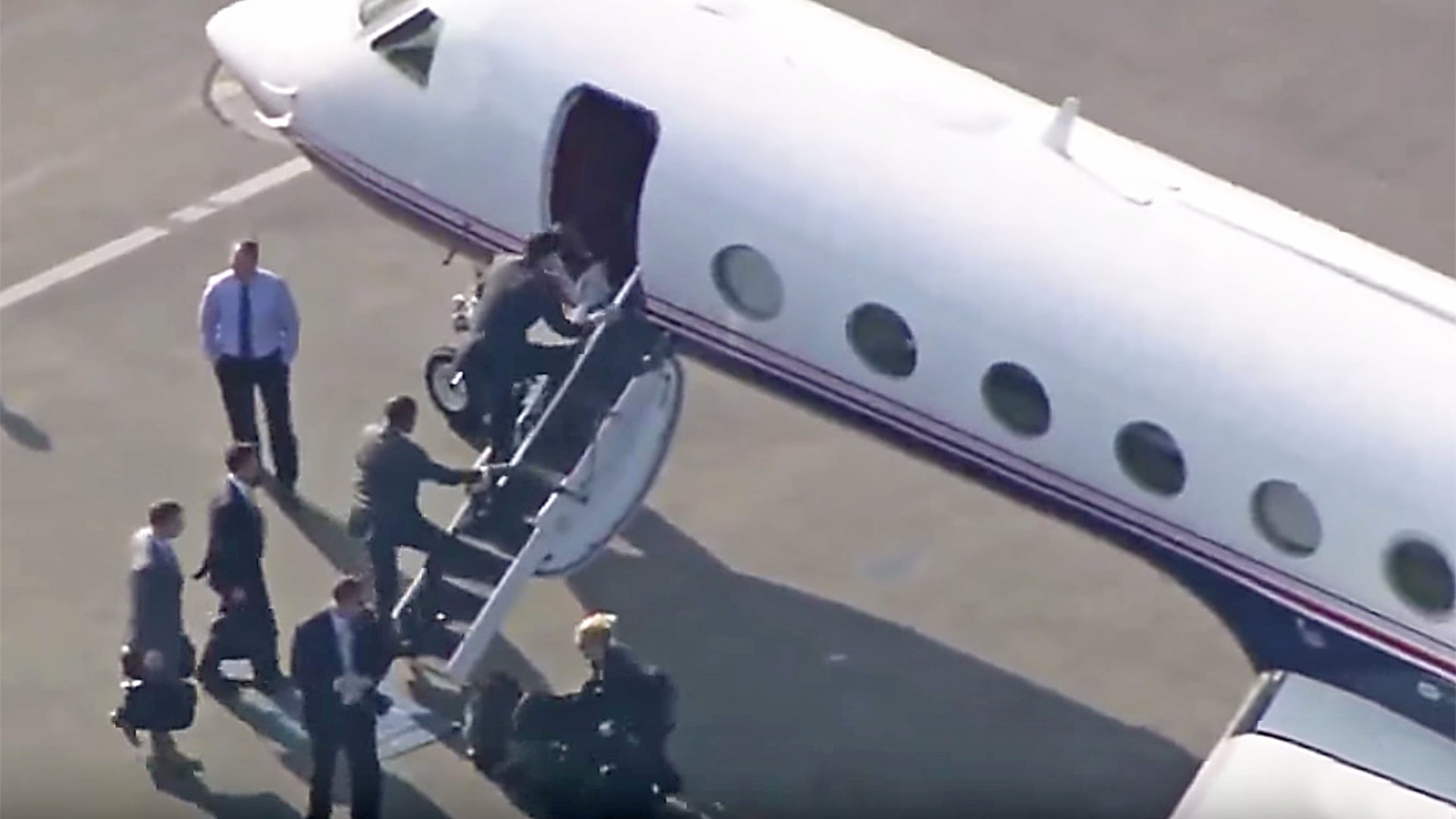It was almost satirical in its level of sensationalism. Not long after the White House delivered a letter to the FBI telling director James Comey that he has been fired, helicopters descended onto the sacked official’s motorcade as it made its way through Los Angeles. The O.J. Simpson-esque news alert ended with Comey stepping up the stairs of a glimmering Gulfstream 550 long-range private jet.
The appearance of the massive luxury aircraft left many wondering if top federal officials really get to travel in such grandiose fashion on a normal basis, especially on just a short jaunt to California. The answer to that question depends on the official, but FBI directors in particular have been closely associated with high use of private jets in recent years.

Beyond the military’s large fleet of executive transports—ranging in size from King Airs to 757s, not counting the presidential airlift mission’s famous C-32As and VC-25As—the federal government has a massive private aircraft inventory. Some agencies even have their very own air forces, like the US Department of State Air Wing.
The Department of Justice, which also includes the Drug Enforcement Agency, U.S. Marshall Service and FBI also have their own pocket aerial armada, made up of small surveillance planes, helicopters and much larger airliner transports. The latter are used to move around prisoners, emergency response teams and other groups of people and material—often on an on-call basis.
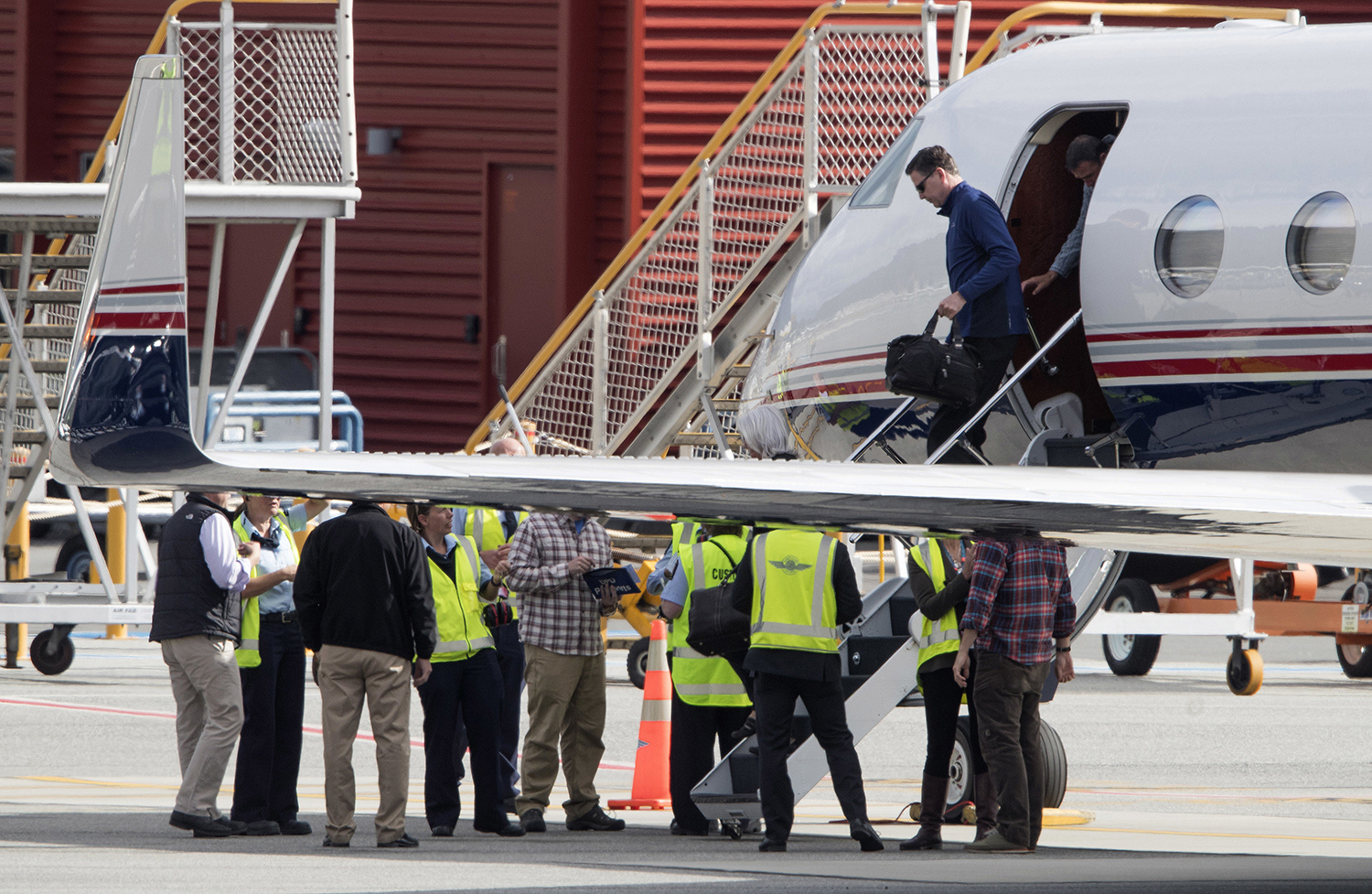
A 2016 Government Accounting Office report claims the Federal Government has 924 aircraft spread across 11 agencies under its purview (owned or leased). The DOJ possesses 101 of these aircraft, of which 67 are fixed-wing aircraft and 26 are helicopters. For 2016, the cost to operate and maintain the DOJ’s aircraft was $62.3 million according to the report. What this report leaves out are the contracted and chartered aircraft that many agencies also use, but it does give a good glimpse of the number of static aviation assets the DoJ has at its fingertips.
The DOJ fleet also includes a pair of Gulfstream G550 jets that were acquired in the 2000s to be used primarily as tools for the War On Terror, but instead ended up becoming flying chariots for the Attorney General and the head of the FBI. This reality garnered some heavy handed oversight by Congress and the glaring eye of the media.
Here is a tour of a G550 with a fairly standard interior configuration:

During the economic crash of 2008, CEO’s were blasted by lawmakers for using corporate jets while simultaneously laying off employees. Meanwhile, executives from the federal government—the most in-debt entity of them all—continued to use jets with nominal oversight. In fact, Congress actually moved to buy more private jets than the Department of Defense asked for in 2009. But things would come to a head as austerity measures began to be introduced on the federal government itself.
The controversy surrounding the DOJ leadership’s private jet use boiled over as sequester threatened the jobs of average government workers, including those in federal law enforcement agencies. Paired with the hyper-political state the country remains in today, some in congress wanted answers on how these high-end assets were being utilized by the FBI Director and Attorney General.
In 2013, Senator Charles Grassley, then the ranking member on the Senate Judiciary Committee, said that because of the high cost of using these aircraft the DOJ’s head honchos should not always use the big G550s or cut back on travel overall, stating:
“These luxury jets were supposedly needed for counterterrorism, but it turns out that they were used almost two-thirds of the time for jet-setting executive travel… Nobody disputes that the Attorney General and the FBI Director should have access to the secure communications, but, for instance, there’s no reason they can’t take a less expensive mode of transportation, or cut their personal travel.”
An investigative report by the GAO followed the controversy. A summary of the report states:
“From fiscal years 2007 through 2011, three individuals who served as Attorney General (AG) and the Director of the Federal Bureau of Investigation (FBI) accounted for 95 percent (659 out of 697 flights) of all Department of Justice (DOJ) executive non-mission flights using DOJ aircraft at a total cost of $11.4 million. Specifically, the AG and FBI Director collectively took 74 percent (490 out of 659) of all of their flights for business purposes, such as conferences, meetings, and field office visits; 24 percent (158 out of 659) for personal reasons; and 2 percent (11 out of 659) for a combination of business and personal reasons.
All AGs and FBI Directors are “required use” travelers who are required by executive branch policy to use government aircraft for all their travel, including travel for personal reasons, because of security and communications needs. However, according to DOJ officials, while the AG has historically been required to use government aircraft for all types of travel, including personal travel, the FBI Director had, until 2011, the discretion to use commercial air service for his personal travel. DOJ officials told us this explains the AG’s greater use of DOJ aircraft for personal reasons than the FBI Director. According to DOJ and FBI flight data we reviewed, all AGs and the FBI Director provided reimbursements for their personal travel in accordance with federal requirements. The FBI also conducts flights from a covert facility to Ronald Reagan National Airport to position aircraft to transport the AG and the FBI Director.
Specifically, $1.5 million of the $11.4 million for 659 AG and FBI Director flights from fiscal years 2007 through 2011 was used to fly aircraft from this facility to Ronald Reagan National Airport prior to transporting these officials to their destinations. According to the FBI, these positioning flights are necessary because, among other things, the location where the FBI maintains the aircraft is an unmarked covert facility, and at times, the FBI initiates sensitive flight operations from this site.”
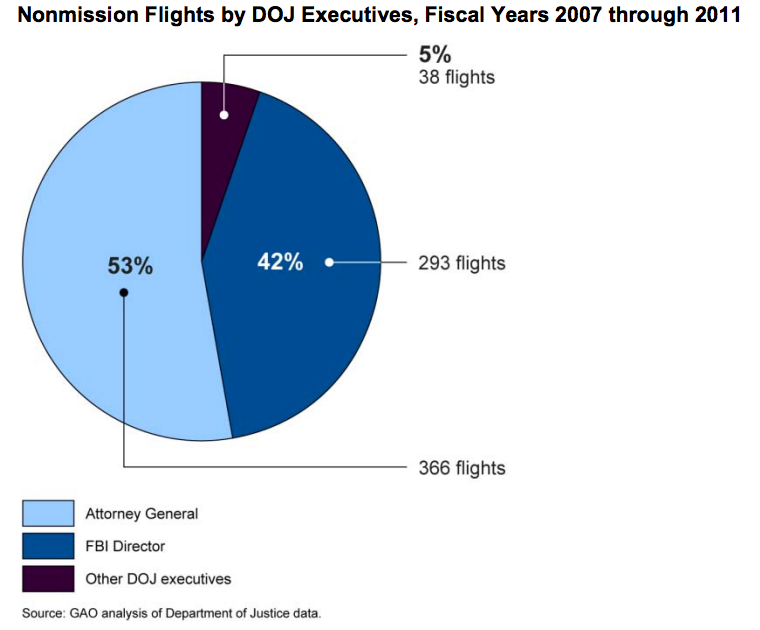
When it comes to the DOJ brass and flying, usually the department’s two G550s are the aircraft of choice. Fittingly, one of these aircraft famously hosted the supposedly impromptu rendezvous between Attorney General Loretta Lynch and Bill Clinton at Phoenix Skyharbor Airport at the height of the Hillary Clinton email scandal.
But it seems that the department now also looks to private contractors to satisfy their executive travel needs. In the case of Comey’s last flight on the government’s dime, the aircraft used was also a G550, but in this case it was registered to Tenax Aerospace. The Madison, Mississippi based company says on their website that they provide general executive transport, aerial firefighting, and special air mission executive transport capabilities. The former pretty much is what the airplane would have been doing in Los Angeles for Director Comey.
Tenax describes this unique mission set on their website:
“Utilizing platforms such as the G550, Tenax provides command and control long range aircraft to perform special mission operations for the highest levels of the US Government. This business model has served not only DoD branches, such as the Navy, Air Force and Army, but also non-DOD agencies like the Department of Justice and the Department of Homeland Security.”
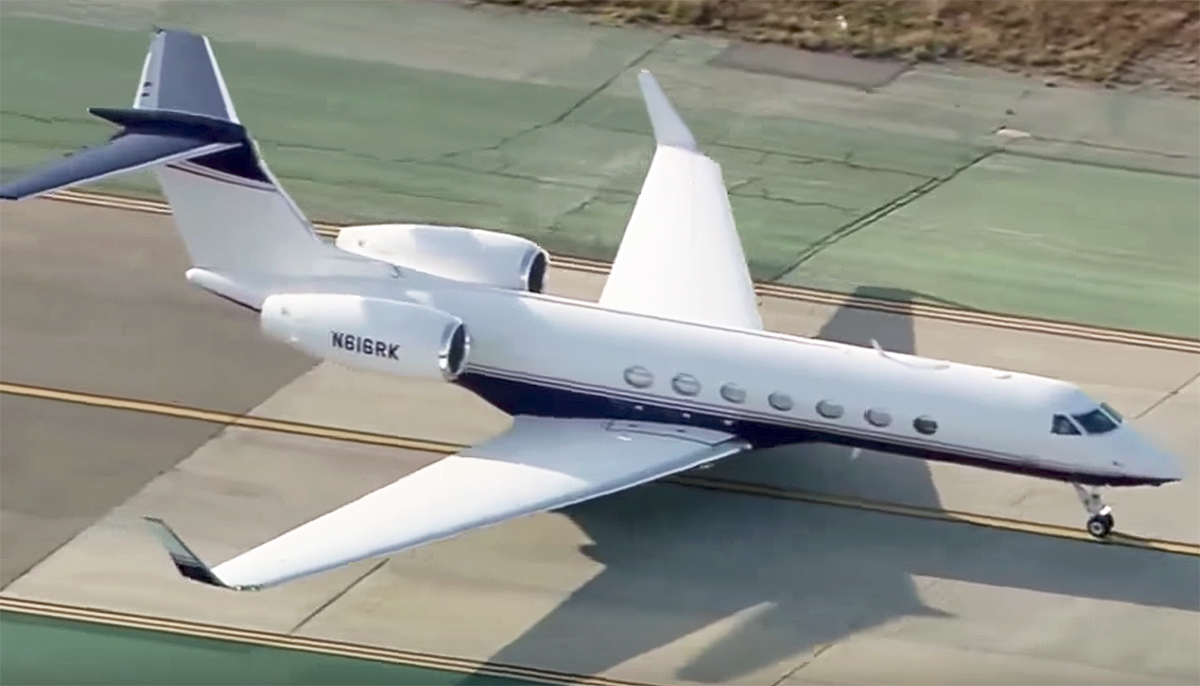
There are millions in contracts between the Tenax Aerospace and the DOJ/FBI since the fall of 2015, according to available records. These seem to be largely related to charter work done by the company’s G550 on the DOJ’s behalf. The company also provides other services which may be more controversial in nature. Tenax describes their surveillance offerings on their website as such:
In an uncertain world, having multiple intelligence capabilities gives our nation’s leaders the vital information they need to make real time decisions. Tenax’s experience includes providing aerial based intelligence to our government customers, such as:
- IMINT
- SIGINT
- COMINT
- GEOINT / LiDAR
- ELINT
- IO
It’s unclear if these services are also bought by the FBI, which is known to operate an extensive aerial surveillance program over the US. Other agencies, such as those under the Department of Homeland Security, could also be customers of this type of work. Regardless, it is pretty clear that Tenax Aerospace, which has ex-Director of the Central Intelligence Agency General Michael Hayden among other retired generals and high-ranking defense-related officials on its board of directions, has a special relationship with the DOJ if they are trusted to provide executive transport in specially outfitted Gulfstream G550s for the Justice Department’s most powerful players.
It’s hard to argue that the head of the FBI or the DOJ shouldn’t have access to a private aircraft, but the use of only the very high-end G550 for nearly all flights, regardless of duration, has been a contentious issue in the past.
Although Eric Holder’s trips aboard the DOJ’s Gulfstreams garnered much attention, the mismatch in mission requirements and the aircraft used was also an issue. The Gulfstream 550 is designed to fly internationally, and can reach destinations nearly 7,000 away without refueling. But they are used seemingly for any scope of travel by the DOJ’s head honchos, including regional trips around the eastern half of the US. A smaller aircraft could have offered the same convenience and security, but at a far lower operating cost.
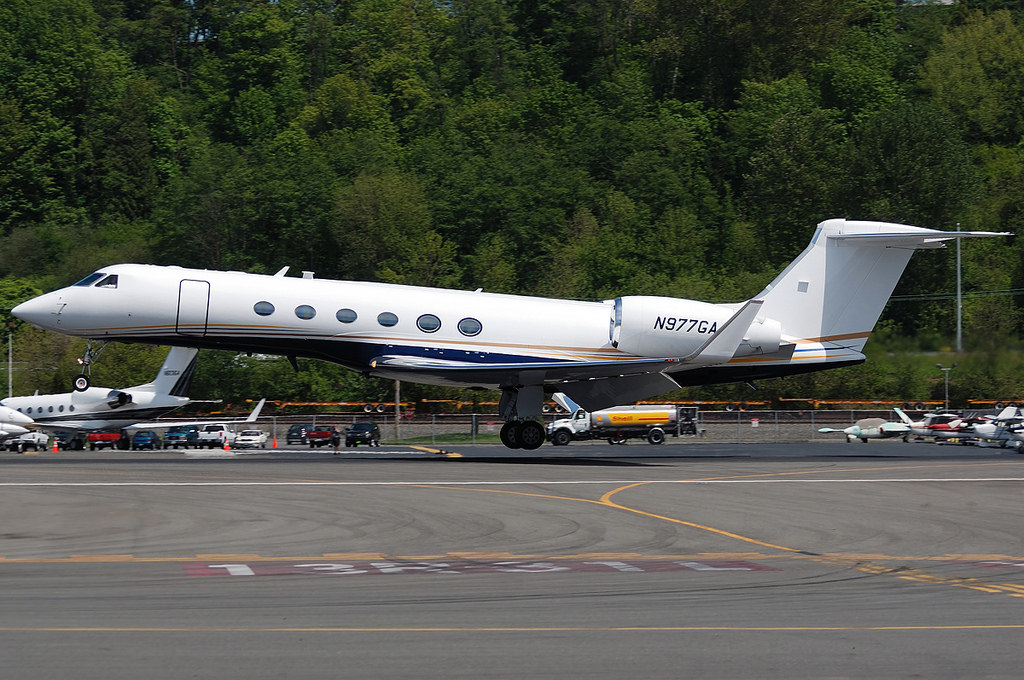
The GAO study did say that between 2007 and 2011 the FBI’s Citation X was used by both the Attorney General and the head of the FBI, but for just 25 percent of their travel. The Citation X is hardly a conciliation prize nor highly economical, being the fastest business jet in the world, although its smaller cabin is far more pedestrian than that found on a G550. And even the Citation X, which has trans-Atlantic range, can be seen as overkill for shorter trips.
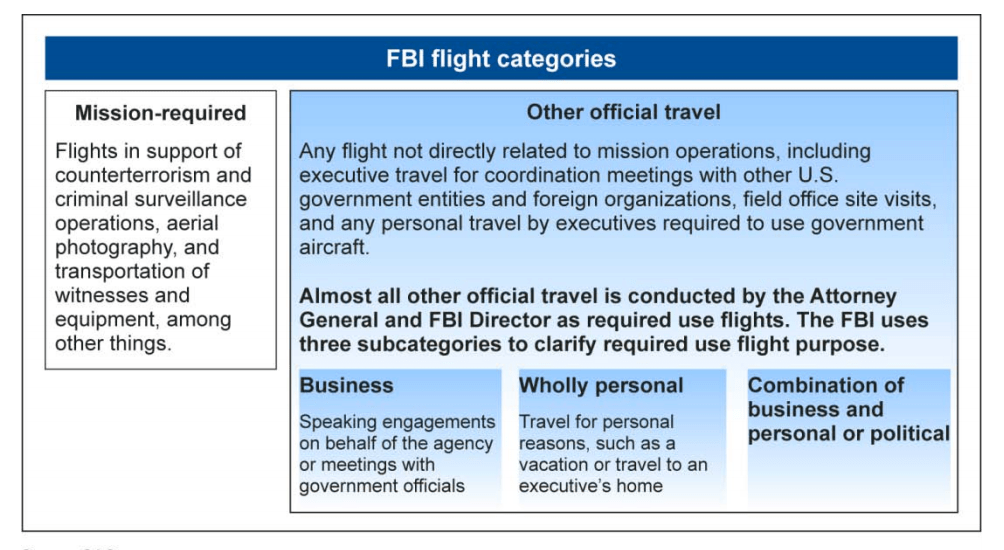
Although the heads of the FBI and DOJ use these aircraft for personal trips as well, by directive they must reimburse the government. But that is not at all what it sounds like. Instead of paying their portion of the thousands of dollars it cost to operate a private jet per hour, they pay the equivalent in a coach class airline fare for themselves and non-essential personnel, such as friends and family, who are traveling with them. The GAO report states:
As previously noted, OMB Circular A-126 requires that the government be reimbursed for any personal travel at the full coach fare between cities.This reimbursement amount, or equivalent commercial fare, is generally less than the cost of operating a government aircraft. For example, a personal trip taken by the Attorney General to New York in November, 2010 using the FBI’s Gulfstream V had an estimated flight cost of $15,894, but the reimbursement at the equivalent commercial fare was $420.80. The FBI’s flight data showed that the FBI Director took a total of 10 trips aboard FBI aircraft that required reimbursement from fiscal years 2007 through 2011, and he reimbursed the equivalent commercial fare for these flights totaling $4,556 in equivalent commercial cost, while 88 of the Attorney General’s trips required reimbursements during the same time period, and he reimbursed the equivalent commercial fare for these flights totaling $46,982.
This may be the most controversial practice of them all, but once again, if these executives have to be able to have secure connectivity at all times, then flying commercial, even on vacation, is not really an option.
So is this all really necessary? It probably depends on who you ask, but it really doesn’t seem like it. For the President, Vice President, Secretary of Defense, the Chairman of the Joint Chiefs of Staff and a small handful of other key officials that would be directly involved with the release of nuclear weapons and other high-end and time-sensitive strategic issues, keeping them connected with secure communications at all times seems like a necessary hindrance. But putting a similar requirement on some agency and department heads seems to be reaching, especially for short trips within the United States. Even then they are not left without access to communications, just secure communications while flying. And it’s not as if they couldn’t land as soon as possible if a major emergency of a highly secure nature were to occur. Additionally, all these people also have deputies to rely on and a chain of command in place that should be able to make decisions if they were temporarily unavailable to do so during transit.
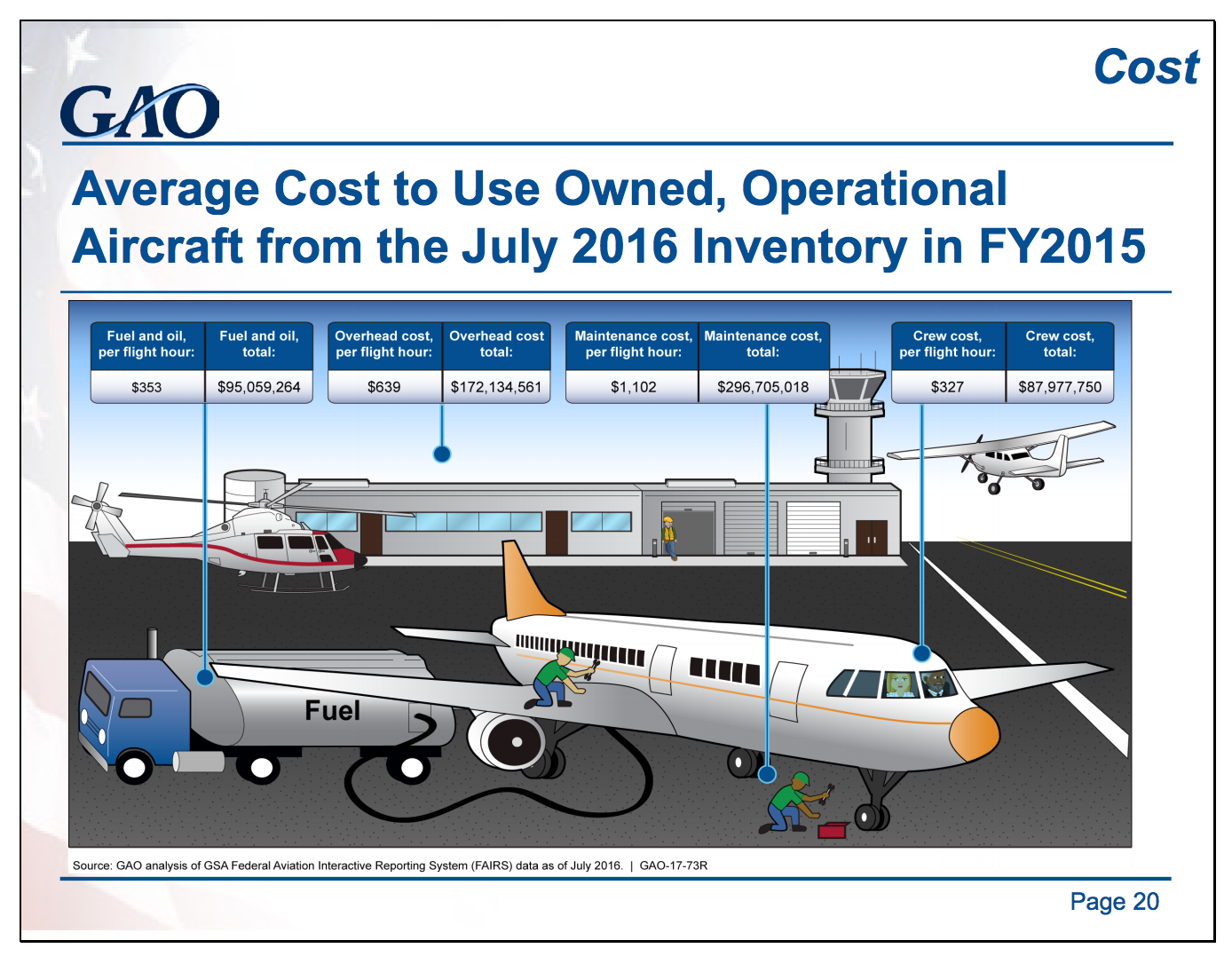
In fact, contracting out all of these agencies’ non-sensitive mission and executive travel may be the best way to go. Pushing highly expensive fleets of private aircraft off Uncle Sam’s books and just buying the airtime as it is needed from the commercial market would allow for a much more elastic and flexible operations model. It would also better allow agencies to tailor the aircraft to the executive airlift mission at hand, saving a lot of money in the process. Above all else, it would probably make auditing the aircraft’s use easier and more transparent, and as a result the utilization of government business jets would become less controversial. Just ask Representative Nancy Pelosi’s office how much of a lighting rod the allocation of these assets can become.
Take the DOJ’s one-size-fits-all operating practice for instance—a G550 is not needed to travel from Washington DC to, say, Cincinnati, Ohio. A light jet would suffice. For trips across the US, a mid-sized jet would be the right fit. If the government came up with a holistic plan to switch over to charters for this kind of work, efficiency could skyrocket. Not just that, but competition would be fierce to get the government’s business, because it is pretty much the biggest client out there. As such, existing charter services would help drive down the per-hour cost and increase the level of service and dispatch reliability for their government customers.
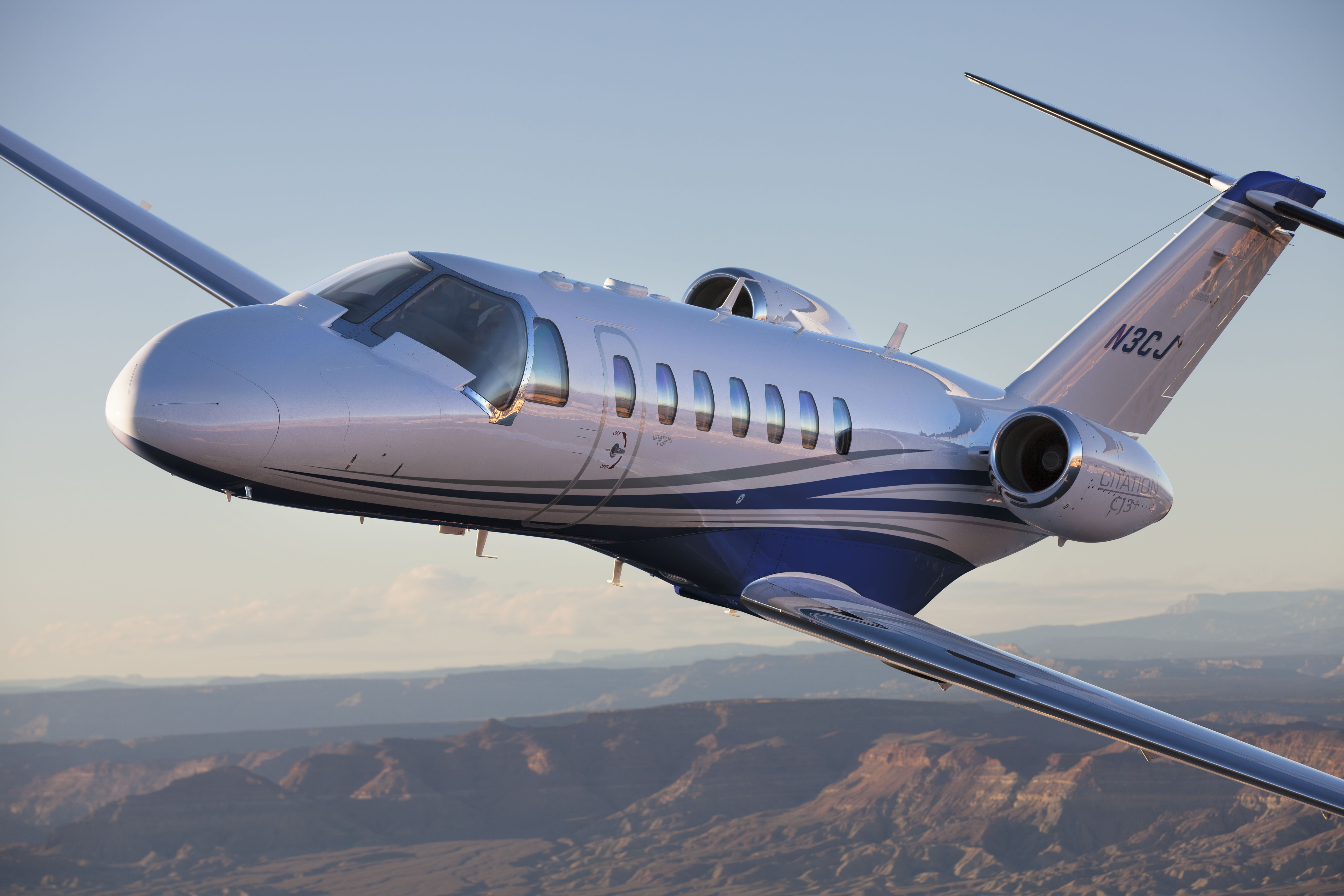
For very long-range missions, and for certain officials, the federal government could utilize approved contractors like Tenax Aerospace, which have aircraft outfitted with secure communications and heavier security measures in place so that all agency business can be conducted in the air. But once again, limiting this to just longer intercontinental flights seems more than sensible than demanding it even for shorter trips within the lower 48 states.
In essence, the Federal Government should look at getting out of the executive airlift business by outsource as much of it as possible. And once again, this is not addressing the fleet of DoD aircraft that provide similar capabilities, which including dozens of C-20 and C-37 Gulfstream jets. Most of these flying limousines could be replaced by chartered aircraft. This is especially true when it comes to scooting generals and other DoD high-ups around the US and other permissive locales.

Even transport in and out of war zones could be contracted out, with special requirements placed on aircraft used for those purposes, such as requiring them to be equipped with defensive countermeasures suites. Instead, the DoD has to house, maintain, provide pilots for, and eventually replace an exhaustive type list of disparate aircraft that provide these executive transport services in-house.
The federal government and the military should examine such a concept. At the very least just studying it and evaluating its worth would be a well warranted reform. Dollars saved could be used by government agencies to fund needed programs and to fill capability gaps and the DoD could use those funds to enhance its war fighting capabilities.
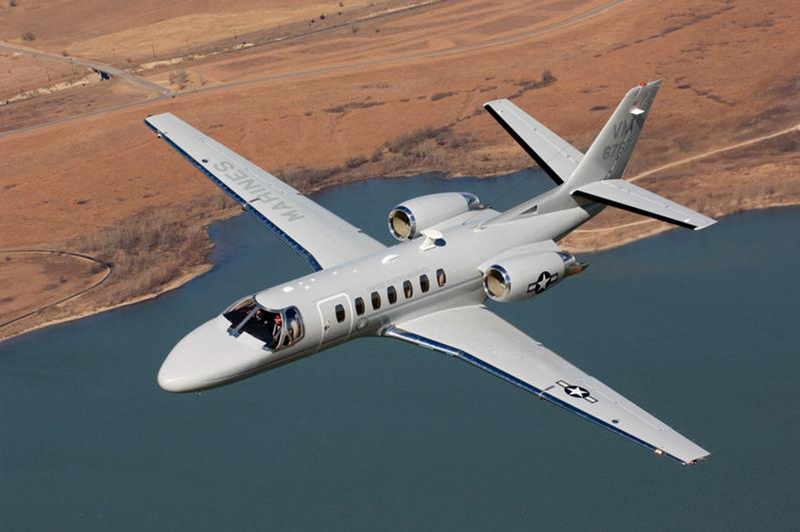
The chances of any this happening are slim. Although President Trump has made many statements about drastically cutting government spending, especially on frivolous things, the President himself is the biggest individual “user” of government owned airlift assets. Decades before he took to the Oval Office, it became clear that Trump loves to fly. Coming from his own fleet of aircraft that included a 757, a Citation X, and a trio of S-76 helicopters, the 45th President has not throttled back on his weekly trips to his resorts, a reality that has become the center of public controversy and disdain by some in Congress. As such, it is very unlikely the White House would start clipping the wings of other government officials on fiscal grounds.
With all this in mind, it is all but certain the next FBI Director will enjoy cruising around in a $55 million high-flying luxury jet just like his predecessor, no matter the destination.
Contact the author: Tyler@thedrive.com
